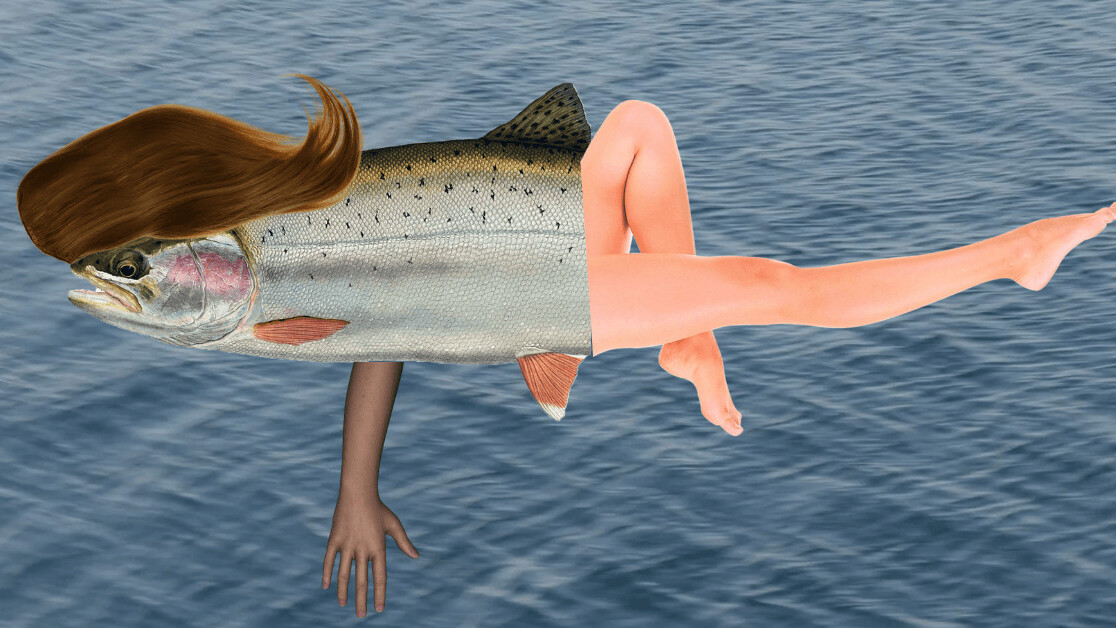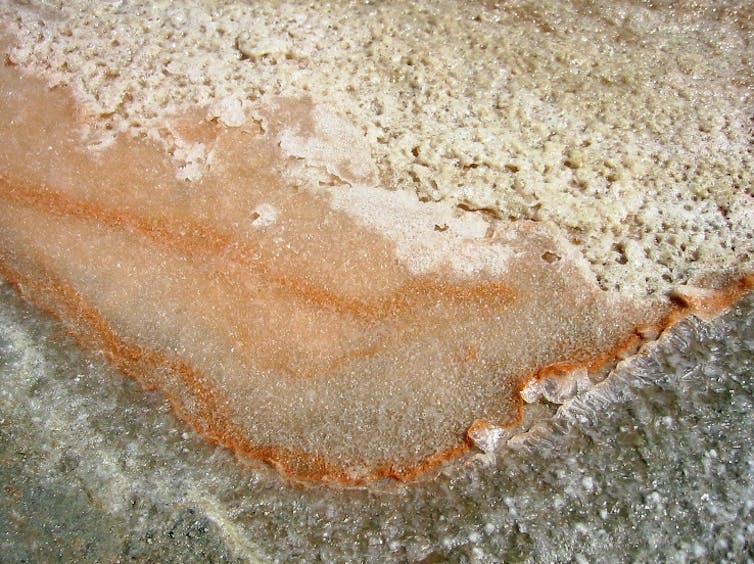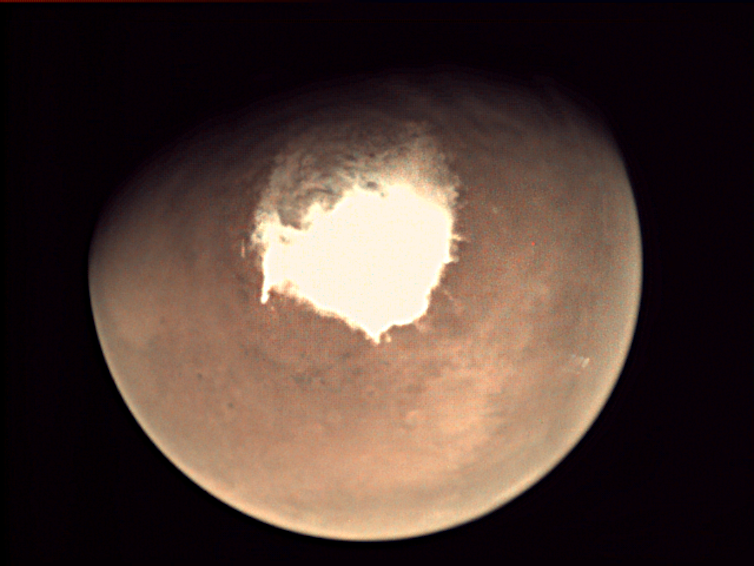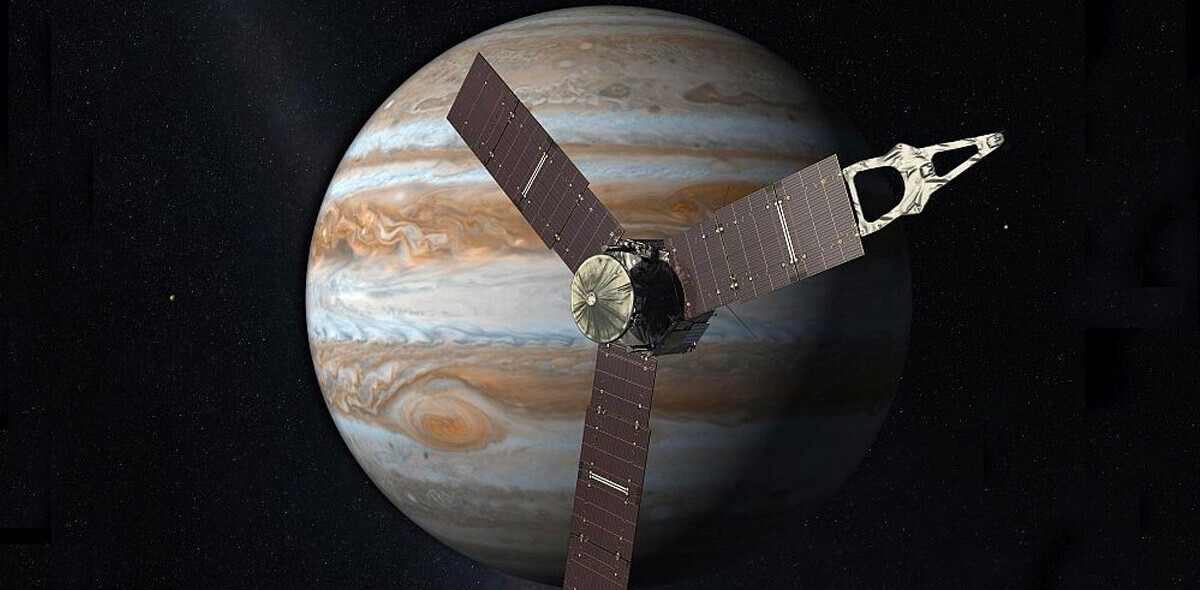
Tantalizing new evidence has suggested that there may be a salty lake below a glacier on Mars. While brine at freezing temperatures does not sound like the most hospitable of environments, it is difficult to resist pondering whether organic life could survive – or even make some kind of living – there.
But what sort of life form could it be? As Mars was once a far more watery place, it may indeed be harboring some ancient life form – either fossilized or alive. It is also possible that microbes from Earth have accidentally contaminated the planet during past space exploration missions, and not implausible that they now reside in the lake.
We are unlikely to find bigger animals in the lake though. There are some insects, fish, and other organisms on Earth that are capable of life at subzero temperatures. Mars, however, lacks the food webs needed to sustain higher organisms. By contrast, many microorganisms are capable of inhabiting hostile environments even when no other organisms are present.
We know from research on Earth that many microbes can survive in brine. One recent study revealed that communities of such “halophilic microbes”, organisms adapted to live at high salt levels, are diverse and rich in biomass – even when saturated with sodium chloride (table salt).

Many terrestrial halophiles are tough – highly tolerant of ultraviolet light and low temperatures. Some are capable of cellular breathing in the absence of oxygen. Certain halophilic microbes – including the fungus Aspergillus penicillioides, the bacterium Halanaerobium and methane-producing organisms known as archaea – may be able to survive in a martian brine.
Low temperature
The main barrier to life is likely to be the prohibitively low temperature (about -70ºC). Yet the temperatures experienced on Mars are actually less cold than those used in freezers on Earth to preserve microbial cells or other biological material in a dormant yet viable condition (-70ºC to -80ºC).
What’s more, some salts can actually prevent brines from freezing even at temperatures as low as those expected in the martian lake. It is therefore beyond doubt that some microbial systems could be preserved (and probably survive) on Mars.
Indeed, we know that microbes can survive long periods in a dormant condition – even without liquid water. We are still not sure how long, but probably thousands of years and maybe much longer. Plants and animals such as roundworms – which are more vulnerable to damage than some microbes – have been revived from permafrost after remaining frozen for about 30,000 to 42,000 years on Earth.
Microbes have also been recovered from fluids inside ancient salt crystals. And fossilised cells of some of the first life on Earth have been preserved in ancient rocks – including those associated with salts.
Types of salt
What is more tricky to demonstrate is that cells can be active under martian conditions. Liquid water is essential for microbial function, and bodies of water on Earth that support populations of cells can vary enormously in scale – from oceans or lakes to thin films of water molecules invisible to the naked eye.
Salt helps determine whether microbial activity can take place in the water. The proportion of water molecules within a solution is the called the relative molar fraction of water – also referred to as “water activity”.
This parameter can dictate whether life is plausible at a specific location and time. All microorganisms have an optimum value for water activity, and a minimum value at which their metabolic activity stops (this varies greatly, depending on the microbe and environmental conditions).
The types of salt and nutrients dissolved in water affect water activity. Some dissolved materials both dilute water molecules and hold on to them via chemical bonds, sometimes preventing cells being able to access them.
The chemical nature of dissolved compounds can therefore determine whether proteins, membranes and other systems that life depends on retain sufficient stability and flexibility to remain intact and functional.
Whereas brines dominated by sodium chloride are by far the most commonly occurring on Earth, sulfate salts were common on ancient Mars, and are still prevalent today. But we can’t be sure whether it is this type of salt that is present in the lake on Mars. If it is, it may be bad news for microbes.
One study has found that brines containing sulfate salts can actually have a higher ionic strength (a measure of electric charge of a salt solution) than those found on Earth, which can make them less habitable. The exact mechanism underlying this, however, remains unclear.
Other types of salt, including magnesium chloride and perchlorates, enhance the flexibility of biological molecules at subzero temperatures and so boost cellular metabolism.
Such salts, which are known as “chaotropic”, can enable growth of microbes at much lower temperatures than usual. The presence of other organic substances that are chaotropic – including glycerol, alcohols and fructose – can also boost cellular metabolism under [hostile conditions], such as at low temperature or low water activity.

So brines are complex and, while we do know much about the biophysical limits for life on Earth, little is known about the stress biology of the overwhelming majority of terrestrial microbes. If a subglacial salty lake on Mars is confirmed, we will first have to determine what salts are there in order to know more about implications for cellular life.
Preservation chamber?
So from what we know of life on Earth, low water activity, salts, chaotropic conditions and temperatures around -70ºC can each act to preserve life. But being preserved is not exactly the same as being alive and kicking. The known limits for growth on Earth lie in the range -15ºC to -20ºC for the most-resilient microbial species.
The limits for cellular metabolism lie somewhere in the range -20ºC to -40ºC. That means there is no terrestrial microbe thus far identified that could retain cellular function under the conditions that generally occur on Mars.
If terrestrial microbes are indeed present in the martian environment, they may well be alive yet inactive, and are likely to have the potential to resume activity once the local temperature increases to a biologically permissive level. And once there is active life on Mars, it is logical to assume that there will also be evolution of that life taking place.
A subglacial saline martian lake is, in reality, more likely to act as a preservation chamber than a cradle of life. Nevertheless, it is still extremely exciting news – making the lake a perfect target for future space missions designed to search for the signs of ancient life.![]()
This article was originally published on The Conversation by John E. Hallsworth, Lecturer of Environmental Microbiology, Queen’s University Belfast. Read the original article.
Get the TNW newsletter
Get the most important tech news in your inbox each week.





